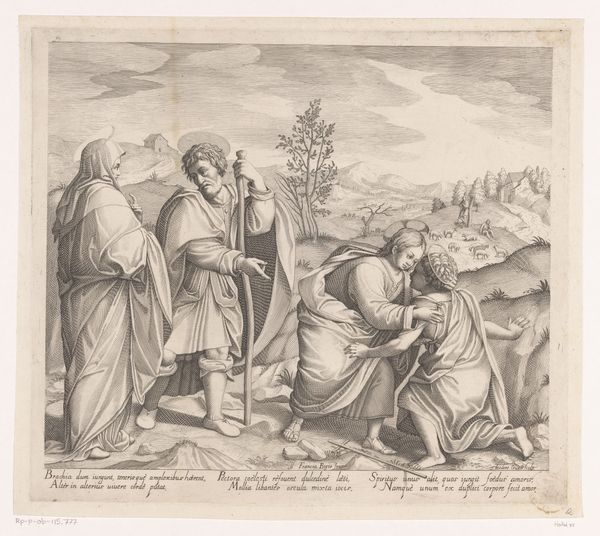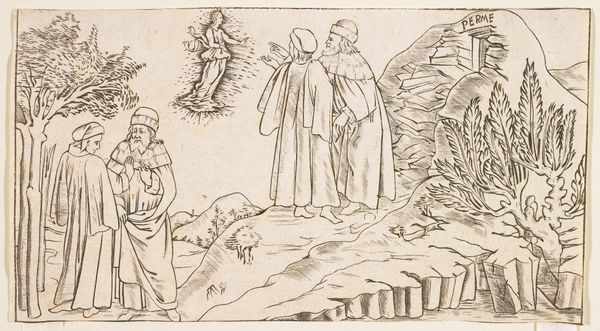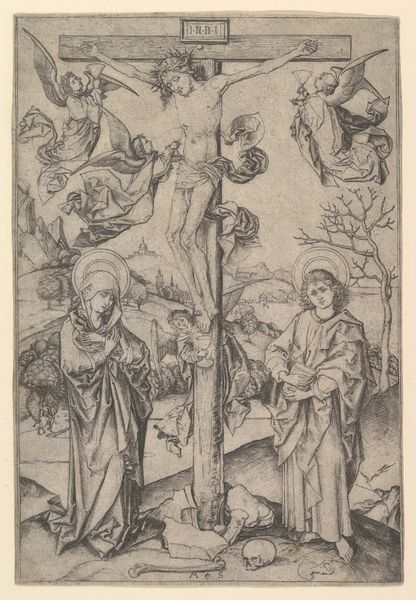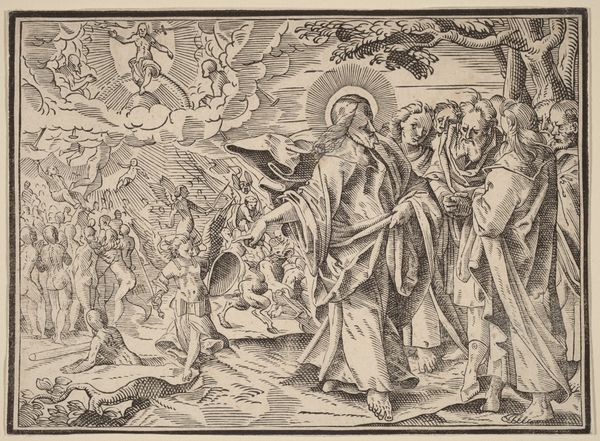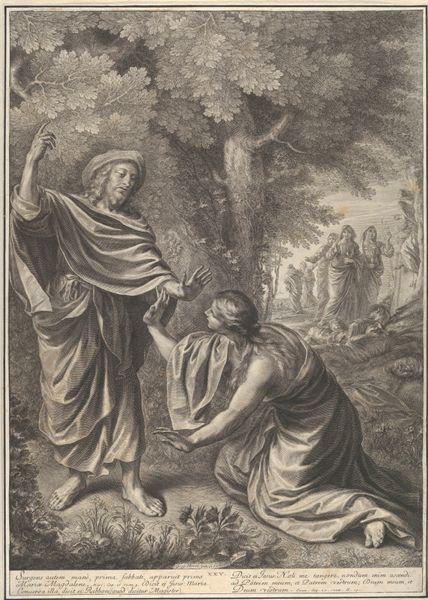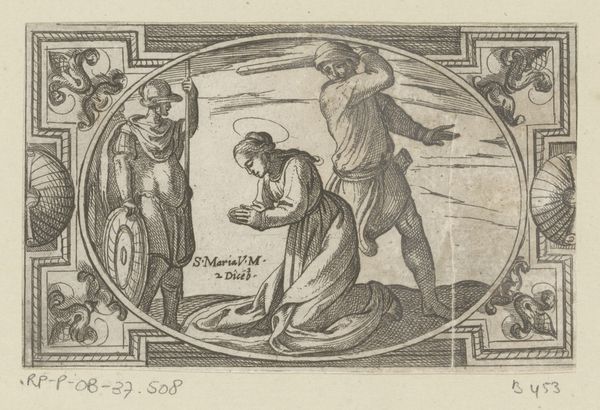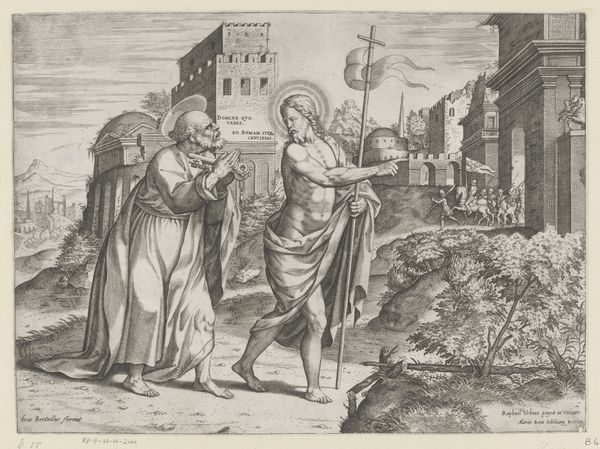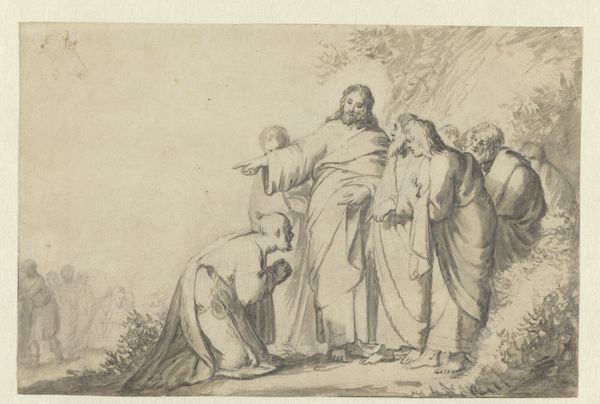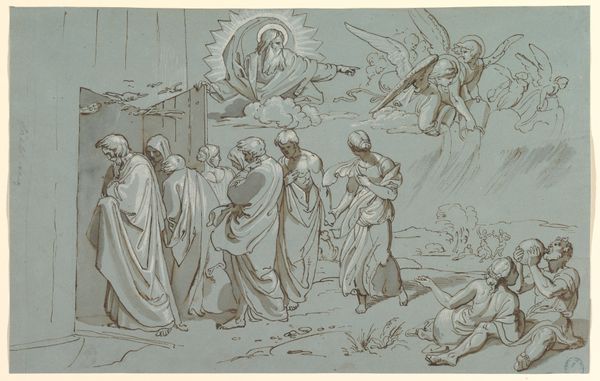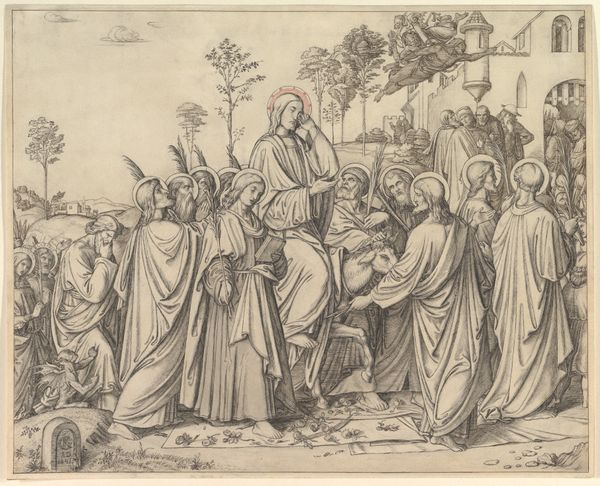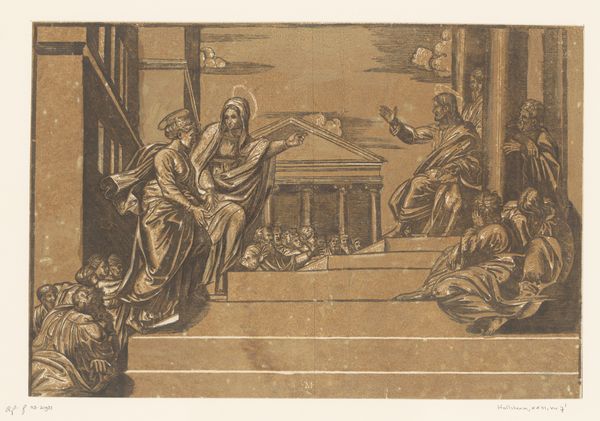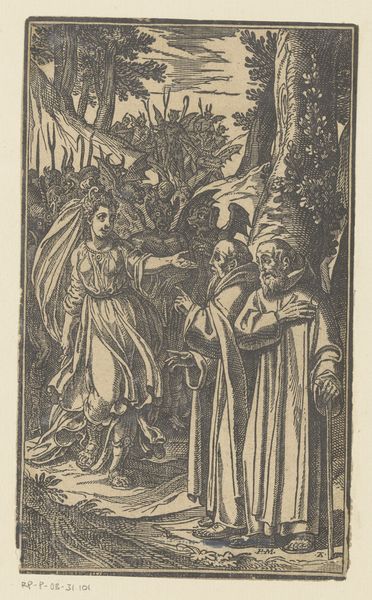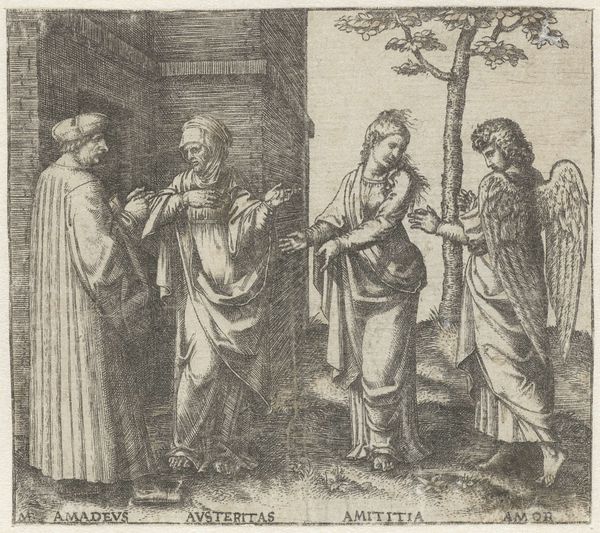
drawing, ink, engraving
#
drawing
#
medieval
#
narrative-art
#
pen illustration
#
old engraving style
#
landscape
#
figuration
#
ink
#
line
#
history-painting
#
engraving
Dimensions: height 260 mm, width 382 mm
Copyright: Rijks Museum: Open Domain
Curator: The piece before us is titled "Emmaüsgangers" attributed to Gijsbertus Antonius Sluijters, dating sometime between 1857 and 1927. It appears to be executed in ink, perhaps as an engraving or drawing. Editor: It strikes me as quite somber. The limited palette and the linear quality lend it a rather serious tone, reminiscent of older biblical illustrations. There's a definite emphasis on the figures and their poses. Curator: Indeed. Considering its historical context, we can appreciate the laborious process required for such detailed line work, which demanded both precision and skill. The engraving likely allowed for wider distribution of this religious scene among the populace. Editor: Absolutely, the formal elements contribute directly to the narrative's legibility. The contrast between the ethereal glow around the figure on the left and the hunched posture of the men evokes the themes of revelation and perhaps disillusionment. Curator: We might also think about the engraver's choice to adopt a style evocative of the medieval period, invoking historical authority and a sense of timeless truth. Was this intended to reinforce the established church, or to subtly critique its relationship to material culture and art production? Editor: Interesting point. From a purely structural viewpoint, the landscape in the background serves not just as context, but as a visual counterpoint. The sharp angles and stark lines form a rigid grid. This is offset by the flowing robes of the figures to invite a dialogue on salvation and belief. Curator: Further exploration might uncover which printmaking workshop or patron commissioned Sluijters to create this image and its distribution channels. This understanding would give insights into the artist’s place within the larger industry of devotional image making. Editor: A study of the interplay between light and shadow would reveal its engagement with the central concept of this illustration. Sluijters prompts an interpretation that goes well beyond a literal narrative depiction, inviting reflection on human insight, as viewers attempt to decipher their presence within its overall layout. Curator: Precisely. It's through that interaction of maker, material and viewer that art's larger meaning becomes knowable. Editor: Yes, by decoding this interplay of visual forms, historical references and technical skill, one gains richer insights on the nature of both image and its function within society.
Comments
No comments
Be the first to comment and join the conversation on the ultimate creative platform.
